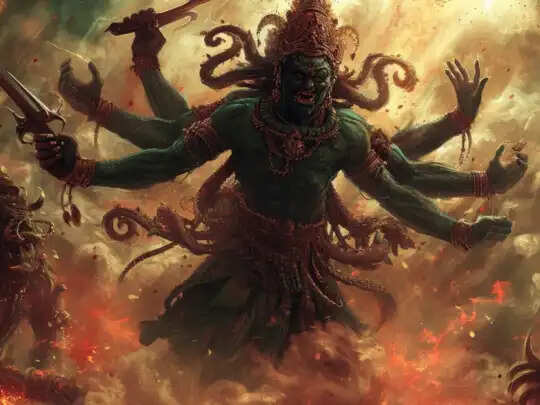Mahabharata is not just a war -waging, but a divine creation associated with the depths of karma, rebirth and destiny. Many of its characters are not only of one era but the secrets of many births are covered within themselves. One of these characters is Karna, who is considered a symbol of valor, charity and compassion in the Mahabharata. But do you know that Karna and Arjuna’s confrontation was not limited to Dwapar era only? This struggle was of many births – the battle between an asura and ascetics, which eventually came out decisively in the Kurukshetra ground.
Karna was asura in previous birth
Karna was not actually born in the Dwapara Yuga, but long before that. He was an asura in his previous birth – Dambhodhava. Dambhodbhwa was a powerful asura, who got a wonderful boon from Suryadev. Suryadev gave him 100 armor and coil, and promised that whoever broke these armor-clocks, his death would be certain. After getting this boon, Dambhodhwa became arrogant and cruel. He started suffering to the gods, sages and ordinary people.
Nar-Narayan raised the resolve of war
Troubled by the atrocities of Dambhodhwa, all the gods went to Nara and Narayan. Nar and Narayan were the sages who had been doing penance in the Himalayas for thousands of years – in fact both of them were previous births of Shri Krishna and Arjuna. When Nar and Narayan came to know about this crisis, they pledged to end Dambhodhava. The male fought first and broke a armor of Dambhodhwa, but he was killed. Then Narayan revived the male with his power. After this, the male again went into penance and Narayan continued the war. In this sequence, 99 armor of Dambhodhwa went on breaking, but he was not killed.
Suryadev saved his devotee
When 99 armor of Dambhodhwa broke, he began to fear his end. He went to the shelter of Suryadev, whom he considered to be his father. Suryadev, pleased with the devotion to Dambhodhava, hid him behind him. When Nar-Narayan came to kill Dambhodhava, he saw Suryadev and did not kill him with respect. But Nar-Narayan promised that he will be born again in the Dwapar Yuga, and at that time Suryadev would not be able to protect Dambhodhava. Suryadev accepted this promise.
Dwapar Yuga: Asura rebirth in the form of Karna
Dambhodhva was born as Karna in the Dwapara Yuga. His mother was Kunti, and the father himself was Suryadev. Karna was born with the last remaining armor and coil of his previous birth, which made him invincible. Shri Krishna knew that this is the same soul that was Dambhodhava. He sent Indradev, who brought his armor-clock demand from Karna. Karna left his protection due to charity.
Pledge of previous birth in Kurukshetra
The battle of Kurukshetra was not only between the Pandavas and the Kauravas – it was a symbol of the conquest of religion over the resolutions and unrighteousness of the previous birth. Krishna (Narayan) and Arjuna (male) defeated Karna in the battlefield. When Karna became chariotless and unarmed, Krishna ordered Arjuna to kill him. This was the moment when the pledge of previous birth was fulfilled. Arjuna killed Karna and the end of Dambhodha by Nar-Narayan came to an end.
Conclusion: unbreakable series of karma and rebirth
This story of Karna teaches us that karma never goes in vain, and in the cycle of rebirth, every soul has to bear the fruits of our actions. Karna’s slaughter by Shri Krishna and Arjuna was not just a political or strategic decision, but the resolution of the end of old unrighteousness. This story of Mahabharata still reminds us that no matter how much the victory of religion, truth and justice takes the time, it is finally fixed.










